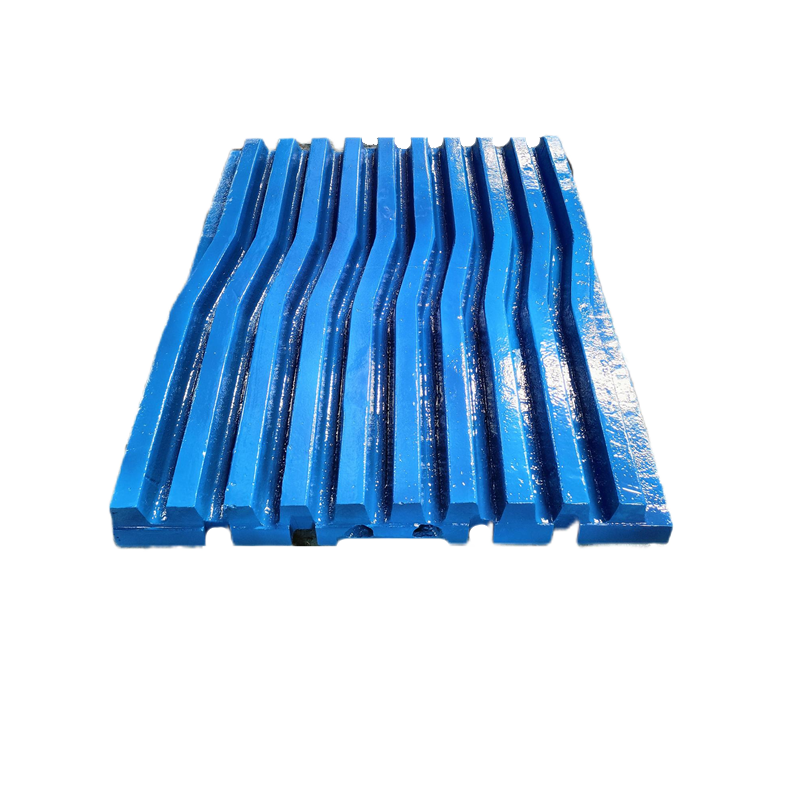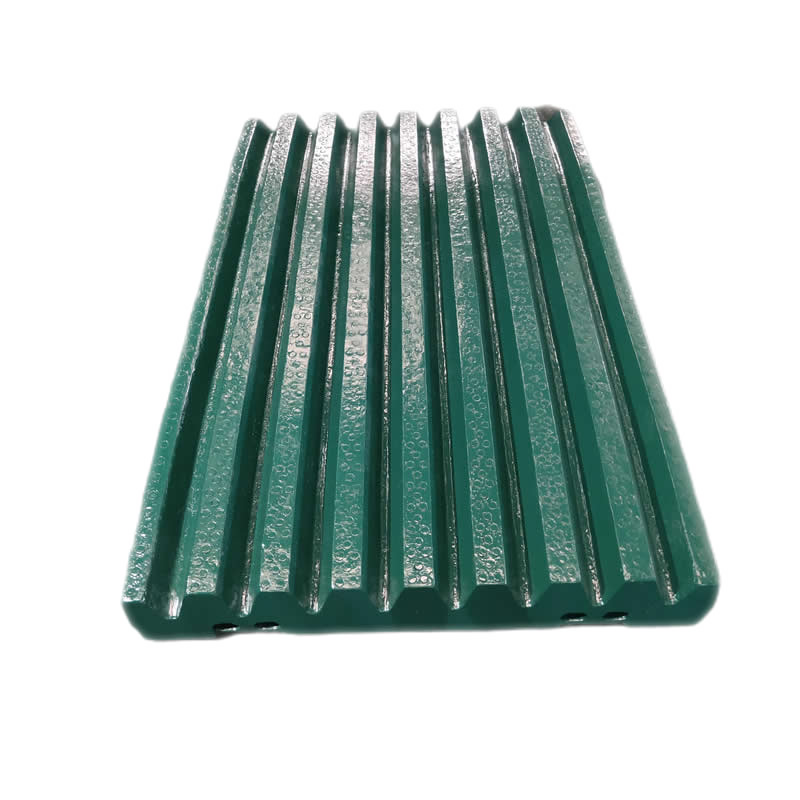- All
- Product Name
- Product Keyword
- Product Model
- Product Summary
- Product Description
- Multi Field Search
 English
EnglishViews: 0 Author: Site Editor Publish Time: 2025-06-06 Origin: Site

Jaw crushers are essential for material reduction in many industries. But, how do you ensure you're using the right size? Choosing the wrong jaw crusher can lead to inefficiencies and costly downtime.
In this post, we’ll explain the importance of proper jaw crusher sizing and the factors you need to consider. You’ll learn how to select the right crusher based on material characteristics, desired product size, and production goals.
When sizing a jaw crusher, the type of material is crucial. Hardness, abrasiveness, and toughness impact how effectively the crusher will work. For example, hard rocks like dolomite or limestone require stronger crushers than softer materials.
The maximum feed size is another key consideration. This refers to the largest size of the material that can be fed into the crusher. It’s vital to measure this correctly to prevent blockages and ensure smooth operation. A crusher that is too small for the material can cause unnecessary wear or damage.
The material properties also affect the crusher choice. Tough or abrasive materials may require crushers made from more durable materials, like manganese steel, to handle the stress.
The final product size depends largely on the closed-side setting (CSS), which is the minimum gap between the jaw dies when the crusher is in operation. Adjusting this gap directly influences the particle size of the crushed material.
As the gap decreases, the product size also gets smaller. However, if the gap is too small, the material may become overly fine or cause blockage. It’s important to strike a balance to achieve the desired size without compromising throughput.
Understanding the required throughput (tons per hour) is essential for selecting the right jaw crusher size. This is influenced by the desired product size and the material being processed. You need a crusher that can handle your production rates without compromising efficiency.
Matching the crusher size to your tonnage goals helps ensure that the machine operates at its optimal capacity, minimizing downtime and wear.

Start by identifying the maximum feed size for the crusher. This ensures that large chunks of material don’t overwhelm the crusher. A feed size that's too big can damage the machine and cause interruptions in production.
The crusher opening must be large enough to accommodate the largest material, which is usually 70-80% of the gape width.
The next step is to define the closed-side setting (CSS). This determines the product size, so it’s essential to choose a range that matches your needs. A smaller gap produces a finer product, while a larger gap results in coarser material.
Regular adjustments to the gap may be necessary depending on the material characteristics and the final size required.
Your tonnage goals dictate the width of the crusher. The larger the crusher width, the higher the throughput. Make sure that the selected size matches your production needs without being too large or too small.
A jaw crusher with the right width and CSS will give you the desired capacity while maintaining efficiency.
The material of the jaw plate plays a crucial role in the crusher’s performance. Different materials offer various benefits. For example, manganese steel is highly durable and suitable for tough, abrasive materials. On the other hand, ceramic and tungsten carbide are better for materials with a higher risk of wearing the plates down quickly.
Selecting the right material depends on the hardness and abrasiveness of the feed material. Choosing the correct material can significantly extend the lifespan of your jaw plates and improve the efficiency of your crusher.
The gape is the distance between the two jaw dies, while the jaw width determines the feed material capacity. The gape should be slightly larger than the maximum feed size to prevent large lumps from jamming the crusher.
The right gape and jaw width are essential for smooth operation. A correctly sized jaw crusher ensures a balanced flow of material and reduces wear on the machine. Too large a gape means inefficient crushing, while a small gape could lead to material blockages and reduced throughput.

It’s tempting to choose a crusher that’s too large, thinking it will handle any task. However, this often leads to inefficiency and excess costs. A larger crusher may use more energy, increase wear, and provide less control over the size of the crushed material.
It’s important to balance the feed size, desired product size, and crusher capacity. The right-sized crusher will ensure optimal efficiency and minimize operating costs.
On the flip side, choosing a crusher that's too small for the material can cause damage and lead to costly downtime. If the feed size exceeds the crusher's capacity, it can cause blockages or even break parts of the machine.
Accurate estimation of feed size is essential for proper crusher sizing. Misjudging the material size can lead to underperformance and increased maintenance needs.
When sizing a jaw crusher for hard and abrasive materials like dolomite, limestone, and sandstone, you need to account for the material’s toughness. Harder materials require a crusher with stronger, more durable jaw plates. The abrasive nature of these materials also means more wear and tear on the plates, so choosing materials like manganese steel is often the best option.
These materials also impact the speed of the crusher. Crushers designed for abrasive materials typically have slower jaw speeds to reduce wear, but this can affect throughput.
Jaw crushers are commonly used for recycling construction and demolition debris. When sizing crushers for materials like reinforced concrete, bricks, and ceramics, you need to consider the hardness and compactness of these materials. The material may also contain metal or other foreign objects, which requires crushers with features like tramp relief to prevent damage.
Recycling applications often require crushers to handle mixed material sizes. Adjusting the closed-side setting allows the machine to accommodate these varying sizes while maintaining a steady output.
Lab tests are essential for determining the ideal jaw crusher size. Testing helps assess the material's hardness, abrasiveness, and maximum feed size. This data is crucial in choosing the right machine to ensure the crusher operates efficiently and provides the desired output.
Material analysis also plays a key role. Analyzing the feed material allows you to understand its properties better, which in turn informs the selection of the right jaw crusher model.
Jaw crushers offer flexibility in their operation, which is crucial for various material types. Adjusting the closed-side setting (CSS) allows you to control the final product size. For example, a tighter setting is necessary for finer materials, while a wider gap may be needed for larger, more robust materials.
Being able to adjust the CSS ensures the crusher works well in different applications, from recycling to processing hard rocks.
Proper sizing involves considering feed size, product size, and tonnage goals. Following these steps ensures cost-effective and efficient crushing operations.Selecting the right manufacturer is crucial. Their experience and support can guide you in making the best choice for your needs. Look for reliable and experienced crusher manufacturers to ensure optimal performance.
A: Manganese steel is often the best material for jaw plates in abrasive applications because of its durability and ability to withstand wear.
A: The closed-side setting (CSS) is determined based on the desired final product size. Adjusting the gap between jaw dies controls the particle size. It’s important to balance this with the material properties to avoid blockages.
A: Yes, jaw crushers are ideal for processing construction and demolition debris, but you may need a model with tramp relief to protect against metal or other foreign materials in the feed.
A: Overestimating the size of the jaw crusher can result in inefficiency, higher operational costs, and increased wear on the crusher due to underutilization.